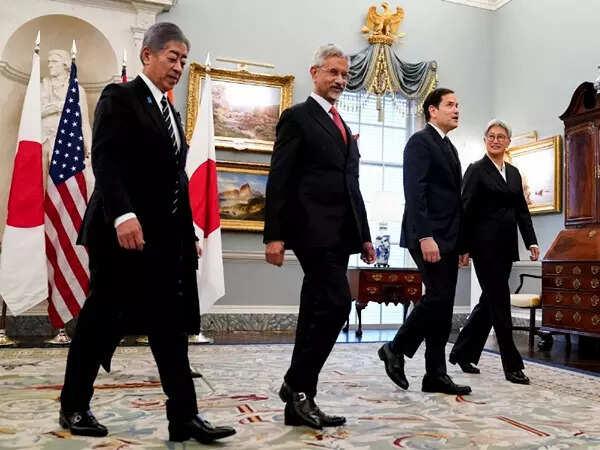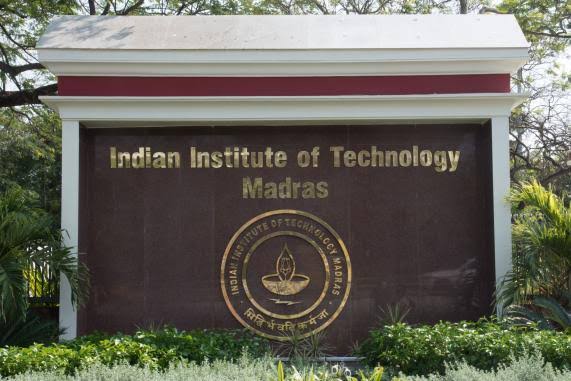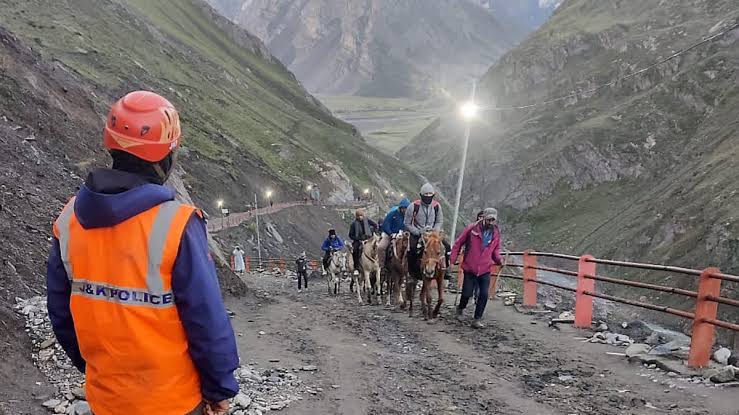 Image Source: Economic Times
Image Source: Economic Times
Key Highlights
On July 1, 2025, the United States, Australia, India, and Japan announced a major strategic collaboration called the Indo-Pacific Rare Earth Alliance, marking a clear collective move to counter China’s near-monopoly over rare earth elements and critical minerals that are vital for modern technologies and defense sectors.
This alliance aims to establish a diversified, secure, and resilient supply chain for rare earth and critical minerals, crucial for electric vehicles, semiconductors, renewable energy, defense, and high-tech manufacturing, reducing reliance on China’s dominant supply and processing infrastructure.
The initiative, launched in Washington under the broader "Critical Minerals Cooperation Initiative," targets the entire value chain—covering upstream mining, processing, refining, technology development, and downstream manufacturing—seeking to build a closed-loop supply ecosystem independent of Beijing.
The alliance divides responsibilities by leveraging the unique strengths of each country: Australia’s rich mineral reserves will serve as the primary source for raw materials; Japan will contribute its advanced refining and processing capabilities; India will provide manpower and labor-intensive operations, benefiting from its large skilled workforce; and the US will coordinate the overall integration, investment, strategic planning, and ensure coherence in supply chain security.
The alliance is explicitly framed as an economic “war” on China’s rare earth empire, responding to Beijing’s 2025 export restrictions and supply controls that have caused critical shortages impacting US military and high-tech industries. With global rare earth stocks at precarious levels, the coalition’s goal is to break China’s chokehold that exposes member nations to geopolitical and trade vulnerabilities.
Through joint ventures, technology sharing, streamlined investment, and coordinated resource allocation, the partnership plans to launch new mining projects, processing plants, and innovation hubs in the Indo-Pacific region, aiming for operational scale-up in the coming years.
A summit of Quad leaders scheduled in New Delhi later in 2025 will further cement frameworks, expand commitments, and publicly endorse the alliance’s anti-monopoly agenda.
This movement coincides with similar critical minerals initiatives among G7 democracies and global efforts to diversify supply chains in response to political coercion, price manipulation, and export bans imposed by China.
Strategic and Economic Implications
China currently controls roughly 80% of global rare earth processing and a significant share of mining, giving it prior strategic leverage used increasingly for political and economic pressure. The new alliance seeks to counteract these risks by building alternative, transparent, and resilient supply routes.
Rare earth elements are indispensable in manufacturing permanent magnets used in wind turbines, electric vehicles, aerospace systems, advanced electronics, and precision-guided munitions. Supply disruptions pose severe threats to technological progress and defense readiness of the Quad countries.
The alliance’s buildout will generate economic growth, technology transfers, and employment across partner countries, particularly India and Australia, bolstering regional industrial bases and reducing dependency on insecure or hostile sources.
By controlling critical inputs from mine to manufacturing, the coalition members aim to reduce supply chain fragility exposed during global disruptions in the last decade, including the COVID-19 pandemic fallout and heightened US-China trade tensions.
The alliance also has geopolitical dimensions, reinforcing Quad’s broader Indo-Pacific strategy focused on safeguarding a free, open, and stable regional order counterbalancing China’s influence.
Challenges and Outlook
Though promising, the alliance faces hurdles such as high capital expenditures, technological complexity in rare earth separation and refining, environmental concerns, and the time-intensive nature of mining projects.
Coordination among four sovereign nations with differing regulatory frameworks and economic priorities requires delicate diplomacy and efficient governance structures.
China is expected to respond with countermeasures ranging from diplomatic pressure, supply chain consolidation, or incentivizing alternative markets to retain global dominance.
Analysts view this alliance as the most significant multilateral economic effort in rare earths since China’s rise, potentially reshaping global resource geopolitics in the coming decades.
Conclusion
The joint declaration by Australia, India, Japan, and the US to establish the Indo-Pacific Rare Earth Alliance constitutes a decisive economic and strategic maneuver to dethrone China’s overwhelming dominance in the rare earth sector. By integrating resource strengths, technological capabilities, and labor pools across member countries, this alliance envisions a sovereign, diversified, and robust critical minerals supply chain crucial for technological innovation and national security. As the initiative gains momentum through planned investments and diplomatic summits, it heralds a new era of competition and cooperation in the global resource landscape—signaling the start of a rare earth economic war that could redefine geopolitical balance in the 21st century.
Sources: Economic Times
Advertisement
Advertisement







